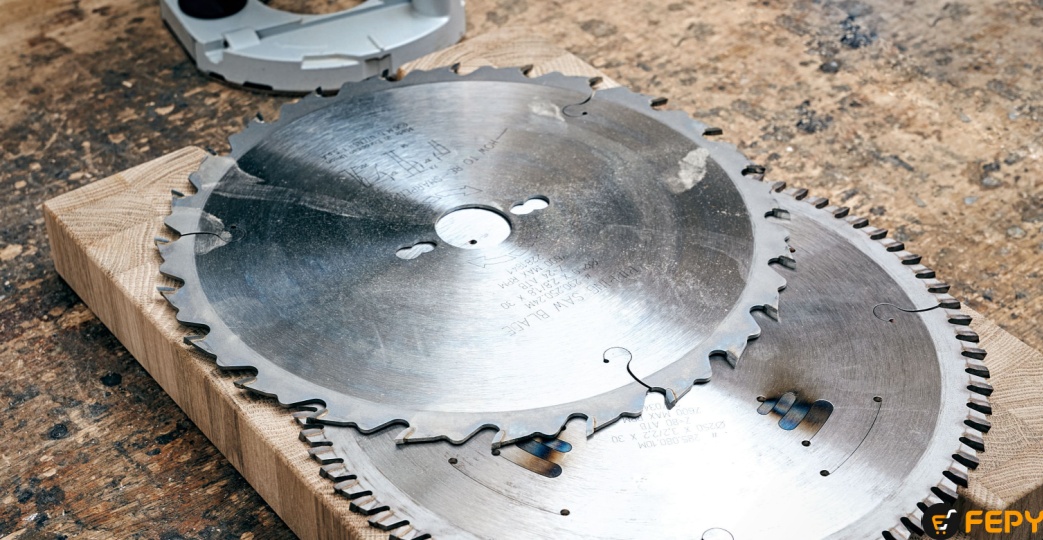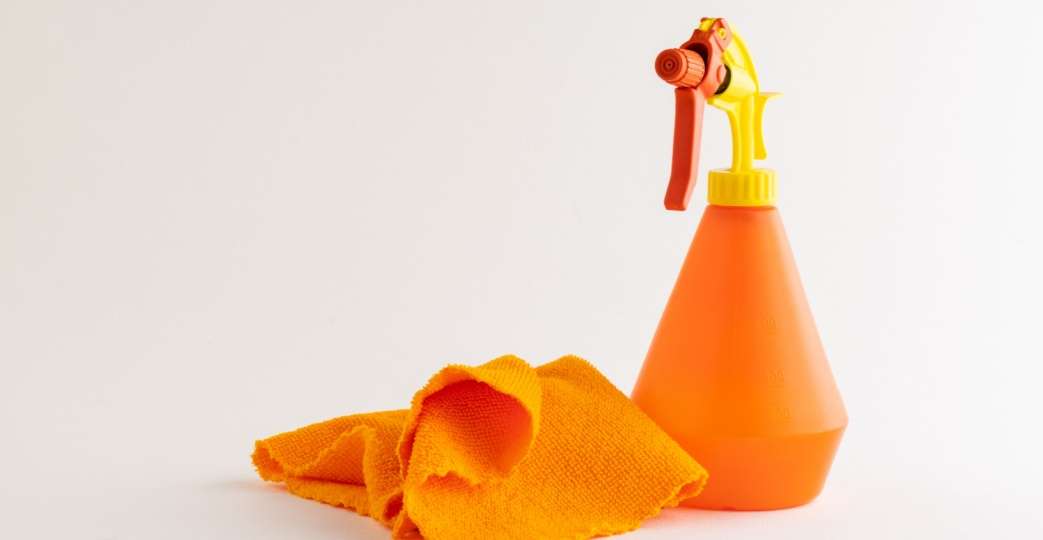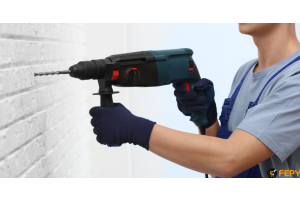How to Maintain and Care for Your Saw Blades

Your saw blades are the heart of your cutting operations. Keeping them clean, sharp, and well-maintained guarantees the best results and saves you money in the long run. Neglect leads to sloppy cuts, dangerous kickbacks, and damage to your precious workpieces. A little care goes a long way, and in this guide, we'll teach you everything you need to know to keep those blades humming.
10 Essential Tips to Maintain and Care for Your Saw Blades
Think of these tips as an investment in your tools and your projects. These tips will help you make better cuts, make your saw blades last longer, and keep you safe at work.
1. Regular Cleaning
The saw blades get dirty. Dust, wood chips, and sticky resin build up after every job, particularly when cutting softwood. This gunk heats your blades, leaving ugly burn marks on your projects and putting your tools at risk.
Household cleaners are surprisingly effective at dissolving this buildup. Soak your blades in laundry detergent, Simple Green, or (carefully!) oven cleaner. A stiff-bristle brush will loosen stubborn bits. Once clean, apply a coat of oil or rust inhibitor to keep those blades looking as good as they cut.
Clean your blades regularly, even if they don't look like they need it. You'll be amazed at how much better they perform and how much longer they last before needing replacement.
2. Keep Blades Sharp

A sharp saw blade is essential. It is the key to a smooth, easy cut, unlike the struggle you'd face with a blunt, tired tool. Sharpness isn't just about better cuts. It directly impacts the safety of your work, the wear and tear on your saw, and the quality of your finished projects.
It's not only about good cuts; sharpness also affects safety, the condition of your saw, and the results of your project. A sharp blade does the work for you. It ensures clean cuts, reducing mess and the need for further sanding and finishing.
In comparison, dull blades require more effort, leading to unsafe kickbacks and irregular cuts. Plus, sharp blades last longer, helping you save money. Sharpening frequency depends on blade usage. Frequent use and cutting hardwood will require more sharpening. Notwithstanding, if you're an infrequent user, watch out for indications like burning, difficulties cutting, or untidy edges. These signs alert that sharpening is due.
3. Choose the Right Cleaning Solution

The cleaners on your kitchen counters won't do for your saw blades. You need the right tools to keep your blades cutting their best. Some popular DIY options, like oven cleaners, can cause more harm than good in the long run. They eat away at the metals in your blade, leading to weakness and even lost teeth!
Instead, look for specialised blade cleaners. These are designed to break down the resin and gunk that build up from cutting wood without damaging the saw itself. CMT Formula 2050 Blade & Bit Cleaner is one well-respected choice. For a gentler option, many users swear by diluted Simple Green, a safe, all-purpose degreaser.
Protect your Coating. If you have Teflon-coated blades, skip the harsh brushes. A nylon toothbrush is a safer bet. Also, read the Label. Not every blade cleaner is equal. Always check to make sure the product is safe for carbide-tipped blades. By taking a little time to choose the right cleaner, you'll help your blades perform better and last longer. It's a small investment with a big payoff.
4. Inspect Before Use
This step only takes a minute but could save you from serious injury. Before you fire up that saw, look closely at the blade. Look for anything unusual—missing teeth, cracks, bends, or anything else that makes you say, "Hmm, that doesn't look right."
Why does this matter? Because a damaged blade is a dangerous blade. It might not cut straight, jam, or worse, a piece could break off and become a projectile. A thorough inspection will help you catch problems before they become serious.
Think of it like checking the tyres on your car before a long drive. It's a simple habit that gives you peace of mind and could prevent a disaster. Make blade inspection a part of your routine, and you'll ensure a safer and more efficient workspace for yourself and anyone around you.
5. Proper Storage

Blades aren't just expensive; they're delicate. Treating them right when not cutting is as essential as using them correctly. That's where proper storage comes in.
Think of your blades like precision instruments. You wouldn't toss a fancy watch into a junk drawer, would you? Saw blades deserve the same care. Invest in a proper storage rack or case, or make a simple DIY holder. It is essential to separate them so the teeth don't bang against each other.
Moisture is your enemy! Rust will dull a blade faster than sawdust. Store your blades in a dry spot, and consider extra protection like blade guards or acid-free paper for long-term storage.
Finally, always handle your blades with care. One clumsy drop can ruin all your hard work.
Proper storage might take a little effort, but it pays enormous dividends. Well-cared-for blades will last longer, cut better, and give you less frustration in the long run.
6. Prevent Corrosion
Rust is a saw blade's worst enemy. Even tiny spots of Corrosion your eyes can barely see can ruin the blade's performance. The good news is that preventing rust is simple with some DIY science.
Your secret weapon is an alkaline paste. Mix beeswax (for toughness), mineral oil (for smoothness), and a bit of sodium hydroxide (sounds scary, but it neutralises acid). Rub this mixture onto your blades after cleaning, forming a protective barrier that keeps moisture and corrosives at bay.
This simple trick isn't just about keeping your blades looking shiny. It means they'll cut cleaner, resist binding, and last years longer before needing sharpening or replacement.
7. Clean Resinous Buildup
Sticky sap and resin are painful, especially when they gum up your saw blades. This buildup looks good; it slows down and drags your cuts. The good news is that removing it is easier than you think.
Break out the kerosene or oven cleaner (use caution with the latter!). These solvents dissolve resin quickly and safely. Soak your blades according to the product's instructions, and watch that gunk disappear. A quick scrub to remove stubborn bits, and your blades will be ready to cut like new again.
Don't let resin slow you down. Regular cleaning means your blades always perform at their peak, giving you the smooth, precise cuts you need.
8. Oil After Cleaning
Think of oiling your blades as the final step in their spa treatment. You've cleaned them, maybe even sharpened them; now it's time to protect that investment. Universal oil or camellia oil are both excellent choices. They create a barrier against rust, the number one enemy of saw blades.
Oiling does more than prevent rust. It helps those teeth slide through the wood with less friction. That means smoother results, a happier saw motor and less frustration.
Take advantage of this simple step! Oiling takes seconds, but it can add years to your blade's life.
9. Sharpen When Needed
Blunt blades are no fun at all! They make your work challenging, increase the chance of mishaps, and give choppy cuts. No need for this! The answer to your problem is sharpening.
Your sharpening frequency depends on blade use. Frequent use, tough wood, and unclean materials dull your blade quicker.
Burning, stiff resistance, or messy cuts in your project signal that your blade needs sharpening. You have a few choices: change or sharpen.
Switching a blade is simple yet costly. Brushing up your sharpening skills might take effort, yet a top-notch sharpening skill pays itself off with the increased longevity of your blade.
10. Consider replacement
There comes a time in every blade's life when it's just done its duty. Missing teeth, deep rust, or extreme wear means it's time to say goodbye. Trying to push a worn-out blade too far isn't just frustrating; it's dangerous.
Missing teeth or weak metal can lead to kickbacks or blade breakage. Neither of those scenarios is good news for you or your project. A compromised blade will never cut as it should, even after sharpening.
Also, there's a limit to how many times you can sharpen away material before the blade is too thin to be helpful. In the long run, replacing a worn-out blade saves time and money and keeps you working safely.
Knowing when to let go of an old blade is crucial to saw safety. When in doubt, always choose the safer option and replace the blade.
FAQs
Q. How do I get my saw blades sparkling clean?
Specialised blade cleaners like CMT Formula 2050 are a great option. For a gentler approach, try diluted Simple Green. Avoid harsh chemicals that can damage your blades. A gentle scrub with a brush removes even stubborn gunk.
Q. How do I keep rust from ruining my blades?
Oil is your friend! A thin coat of universal, camellia, or multi-purpose product like Ballistol creates a barrier against moisture. Apply after every cleaning.
Q. When is it time to sharpen, and when should I buy new?
If your blade shows signs of wear—slow cuts, burning, ragged edges—it's time to sharpen. Missing teeth, deep rust, or extreme wear also mean it's time for a replacement.
Q. How do I store my blades so they last as long as possible?
Dry is the word! Hang blades individually or store them in a case designed to protect the teeth. Avoid stacking or letting the blades bang against each other.
Q. Why is blade maintenance even worth my time?
Sharp, well-cared-for blades are safer, cut cleaner, and last longer. That saves you frustration, time, and money!
Final Words
Taking care of your saw blades isn't just brilliant; it's the key to better work and safer cutting. Clean blades, sharp blades, and knowing when it's time for a new one will save you time, money, and frustration. Think of blade maintenance as a badge of honour for true craftsmanship.
FEPY is the UAE's leading e-commerce store. It has everything you need to keep cutting like a pro. It has top-brand blades, cleaners, sharpeners, and storage solutions – all at the most cost-effective.
Remember to enable notifications to receive our best deals straight to your inbox. With FEPY as your partner, you'll always have the right blade for the job.





